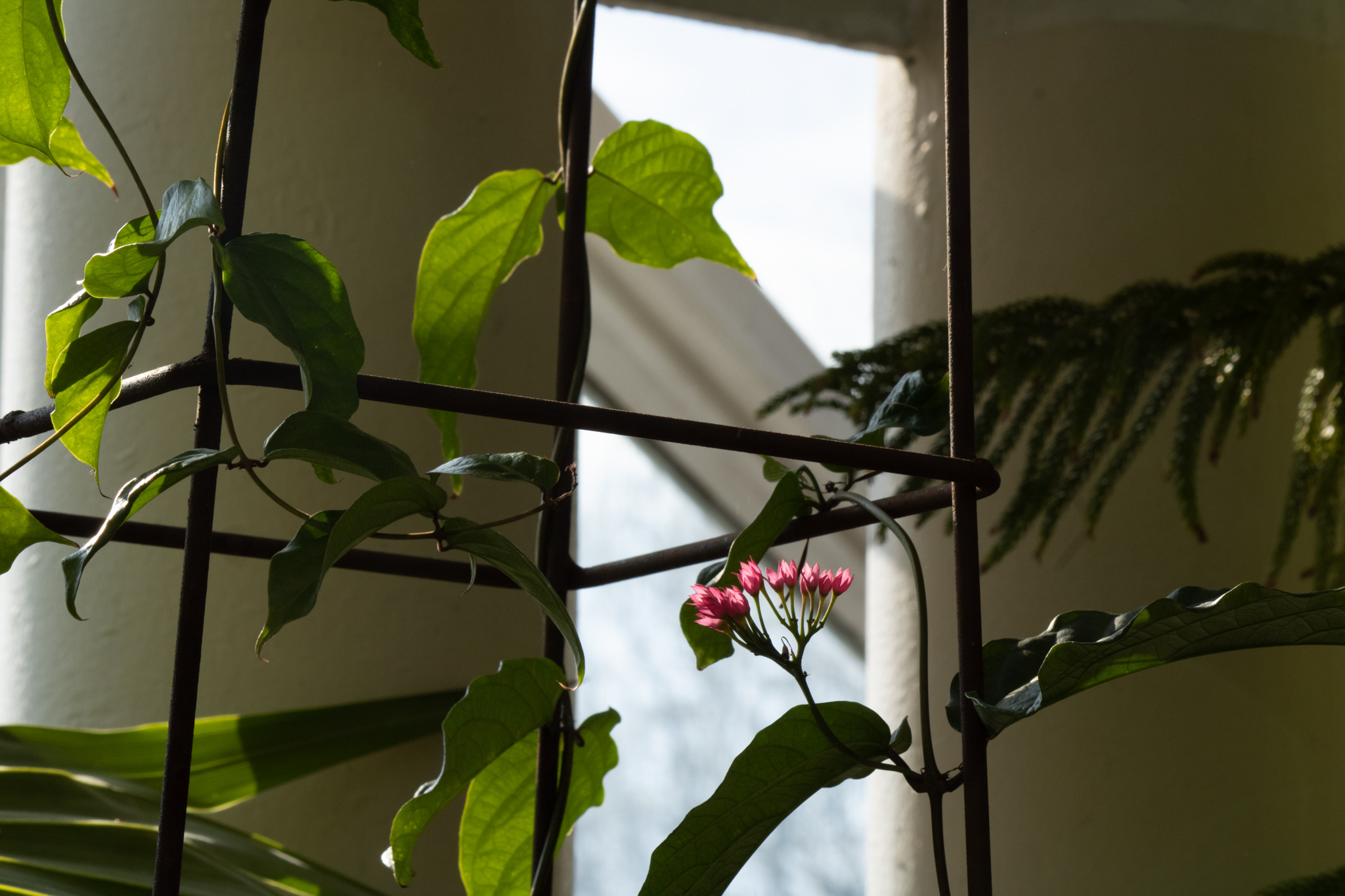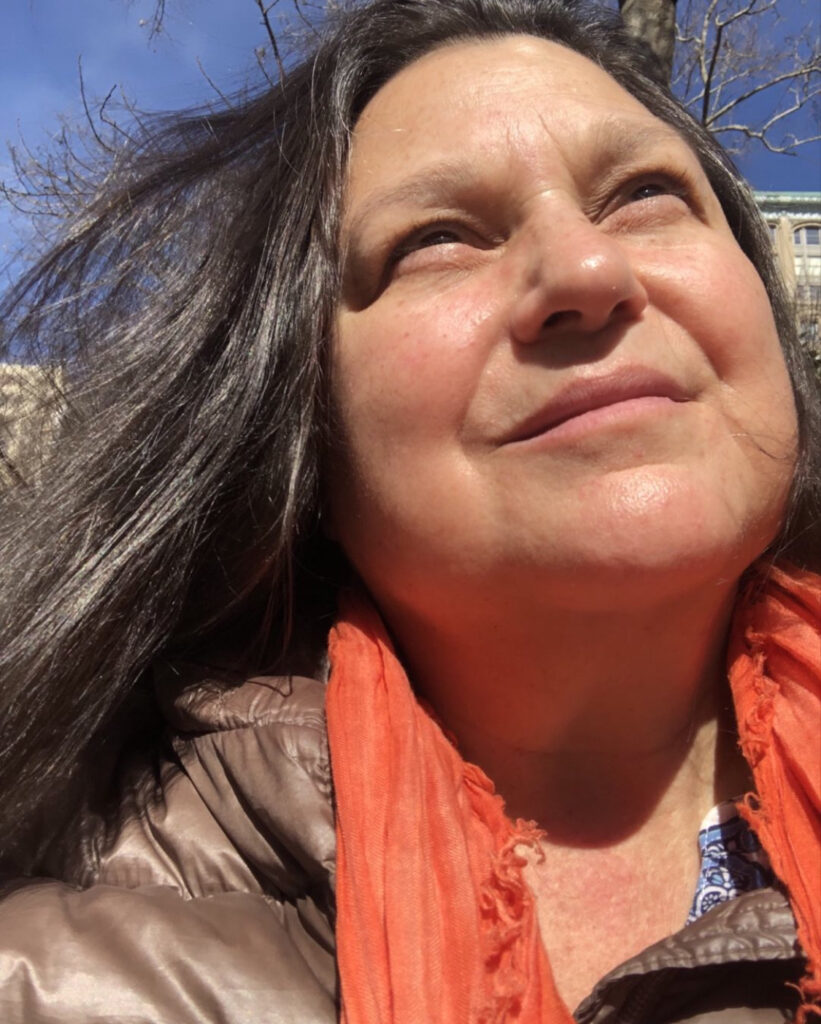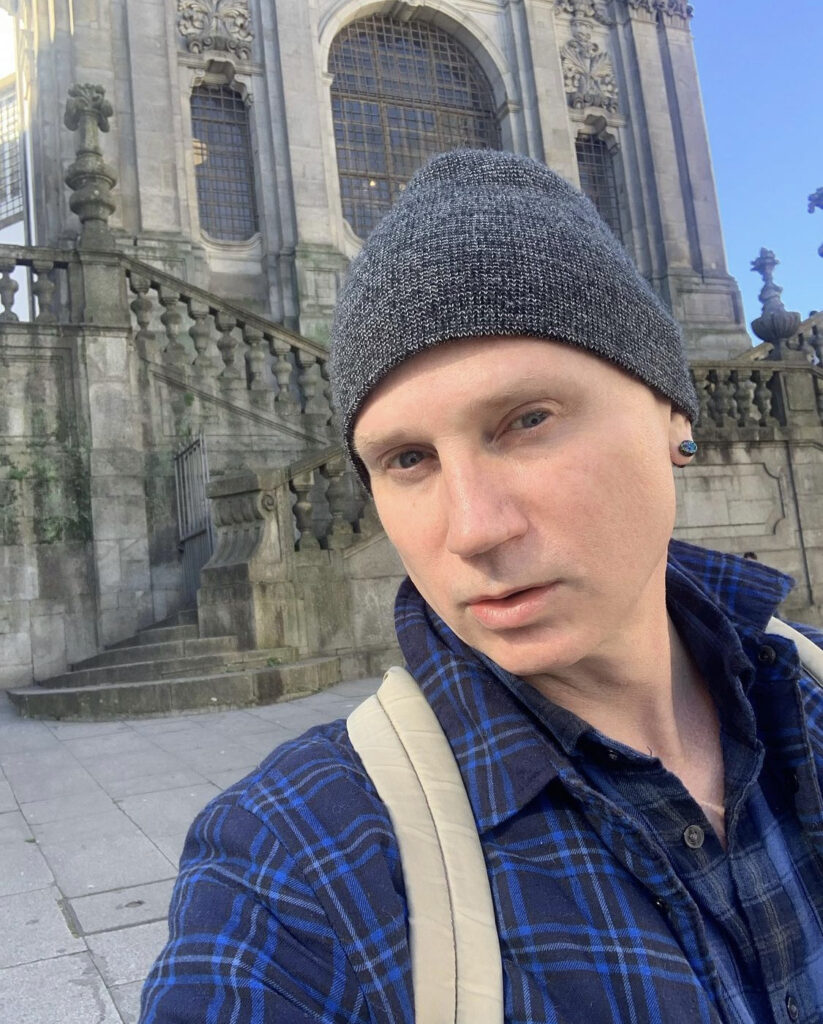
5,000 Miles From Its Birthplace and Right at Home? Shamanism in NYC
By Lauren Abunassar
The shaman is in Chelsea.
It’s not quite a rainforest but everything is tinged with the smell of fresh-cut flowers. There are verdant green tunnels of foliage — albeit, ones made of potted crabapples and styrax, boxwoods and cypress, even the odd transported palm. Water glistens, diamantine, on the leaves. Close your eyes and you might smell petrichor. The illusion of exoticism is a heady mime.
The shaman’s office is in a building with a huge glass door and a postmodern chandelier. She shares the building with four MDs, a literacy trust, a physical therapist, a portrait studio, a copy machine repair service. This is a version of what wellness looks like: taking yourself to Chelsea and entering a palatial apartment, sitting on a threadbare cushion on the floor, wondering who came before you, and watching Olivia Olkowski — the shaman in question— discern the nature of your spirit. Estimate your energy. Search for the soul coursing through your folded-up limbs.
The shaman is a little defensive. “You gotta do your research,” she says sharply when I tell her no, I’ve never heard of Indigo Children. Her eyes offer the perfectly rounded gaze of appraisal tinged with judgment. Her smile is enigmatic — framed by lines that look like two perfect parentheticals. Where do you stand with her, you’ll wonder. Is she powerful? Are you powerful?
***
Shamans beat on drums.
They also hum, sing, chant. They will practice gentle massage. They will use crystals — amethyst, black tourmaline, moldavite — and they will use piezoelectricity within the crystals to enhance personal power, ground you, open vibrational doorways. They will take white candles to remove the residue of grief or anger or frustration from a bad trip on the subway. They will rub the candle over you, cleansing and restoring your energy levels. They’ll melt the candle down, pour it in a pot of water, read the wax like tea leaves and diagnose you based on what they see.
To be able to talk to a past self, to unearth a hidden demon (literally speaking), to discover your soul — all potential shamanic services — can be an enticing prospect for the non-skeptic. But there is still the question of why, what, how… Why pay prices upwards of $190 an hour for services with intensely intangible results? What does it mean to seek these services in an environment so removed from the practice’s cultural roots? And how might this say something, culturally speaking, about the need to source increasingly alternative healing methods for an increasingly wide variety of daily wounds that need healing?
The loose boundaries of shamanic work are defined not by practice but by the lived experiences of the people who walk into the shaman’s office. This can elicit even more questions.
Is the alternative a dangerous way to face these human experiences? Or is it a means of filling a void some “traditional modality” cannot fill? When the spirit comes calling, do you answer? And maybe even more, how can you be sure it’s actually the spirit calling?
***
Historically speaking, shamanism itself is notoriously difficult to define — particularly when you remove it from its indigenous roots and send it on the long journey from Siberia to New York City, for example. But reduced to its basest function, it involves one’s ability to interact with the spirit world, summoning these forces to heal and to reveal where humans have gone wrong — in this life or another. The allure of shamanic power is part and parcel to what also makes it dangerous, however. At least if you ask Alice Kehoe.
Kehoe, a New York City anthropologist and archaeologist, is partly known for her field-work with Native American communities and her early writings on shamanism. A huge part of the conversation, Kehoe argues, has to do with the question of language. If you remove the very word shaman from its origins in Siberia, you begin to distance yourself from the truth of what the practice really is and shamanism becomes yet another victim of Western cultural appropriation.
Surprisingly, Catherine the Great played a huge role in getting the ball rolling. It started with a play she wrote, The Siberian Shaman (1786). The shaman in the play was a bumbling buffoon — the height of “othering” another cultural practice, making it parodic to a point of absurdism. When Goethe saw the play, he was entertained and began writing about shamanism. And thus, momentum grew when it came to bringing the word — and the practice — into the Western repertoire.
The history, according to Kehoe, is a part of the question of whether or not the construct of the NYC shaman is trustworthy. Something which also involves how much Western science is a product of imperial conquest disguised as enlightenment. But the leap from othering the practice to popularizing it can be largely credited to Mircea Eliade, a historian and philosopher at The University of Chicago. Eliade popularized the idea of shamanism as a primordial human religion that Western-educated people needed in order to return to the idea of the sacred. To return to their healthiest fundamental selves.
Ask Kehoe and, over and over, she’ll call Eliade a “brilliant con man.” Kehoe still remembers the University of Chicago anthropology students who came up to her and recalled taking Eliade’s course, dumbfounded. Logic was absent. “They couldn’t understand what he was talking about,” Kehoe laughs. The key was: he had the ability to leave people spellbound.
In this way, Kehoe compares these Western shamans to television evangelists. They’re also looking for the truth about who we are, why we’re here, what we must do to be good. “People are emotionally wrought that they’re missing out on something,” Kehoe explains. Evangelizing involves a series of advancing conditionals: you won’t go to heaven unless… You’ll be granted forgiveness if… You’ll be blessed if… Except, followers of the shamans aren’t necessarily just looking for salvation.
Instead, many are also drawn to alternatives wellness modalities that may be filling the gaps of standard medical care. In 2017, Pew Research Center identified half of Americans have tried some form of alternative medicine, with one-fifth choosing an alternative medical approach over a conventional one. Sometimes, people look around and just want something else.
Kehoe connects the popularity of shamanism — and that which leaves it ripe for mistranslation— to a pervasive sense of existential angst. Take this sensation and track it to New York City. Angst is everywhere. People need to understand more, to question more, to achieve more. Of course shamanism would have some contemporary and urban permutation.
The danger is obvious to Kehoe: “Unlicensed practitioners who are fooling around with people’s minds, emotions — especially if taking a drug is involved.” In this way, Shamanism is like some care-based version of the wild west. In a lot of ways, it’s lawless. And in a lot of ways — for both the patient and the practitioner — there is a glamorous tinge, even where danger is involved. This is not to say every shaman is unethical. It comes down to the responsibility of the practitioner. How do we trust this? Particularly if the practitioner is catering to a community of the intensely vulnerable, whose sense of discernment may be inhibited in response to trauma, injury, distress?
Kehoe remembers Michael Harner, an anthropologist who founded the Foundation for Shamanic Studies. From his massive institute in San Francisco, he would send research material Kehoe requested as she was writing about shamanism. He was very generous. And, according to Kehoe, he seemed sincerely convinced of shamanic capability and felt shamanism as a practice was worth proselytizing. According to Kehoe, he believed “it would save people.”
And Harner did go to the Amazon when he was completing his dissertation. He did work to learn from some version of the indigenous source. Just as Kehoe completed extensive fieldwork with various indgenous tribes. The problem is, Harner didn’t speak the language. So the question becomes, how much could he have understood that he then brought back and mass-marketed to the general public? Kehoe remembers one of her Blackfoot colleagues saying something at a conference once: “If you don’t speak our language and you don’t live in our land, you don’t know what I’m talking about… I’m not talking about Blackfoot culture. I’m talking about Blackfoot reality.”
Kehoe doesn’t speak the language either, she admits. But she references the vast amount of time she spent on indigenous land with indigenous communities. “I saw the evidence,” she says, “that thunder in the summer is living on the top of the mountain.” How much of this reality could Harner comprehend? How much can shamans today?
To question shamanic practice is not to question intentions. It’s also not to say that an increasingly disillusioning traditional healthcare system may not play a role in leaving us craving alternatives even more. But has shamanic practice been culturally appropriated to a point where even good intentions are foiled by crucial gaps in knowledge?
New York is the quintessential melting pot where all different types of people from all different types of places come searching. For themselves. For community. This sensation of being at a seemingly irreconcilable loss can be as distressing as it is relatable. Shamanic practitioners like Harner, Kehoe notes, “offer what they believe is a way to relieve that.”
***
Back in Chelsea, Olkowski explains an overarching tenant of the shaman’s role: “My job is to hold sacred space,” she says. “Even as a kid, I would face my fears. I was afraid of the dark because I thought I was seeing stuff. Well, hello! I was!”
When working with her clients, very often, the dark is what she must face. On Wednesday, for example, a therapist came to visit her. She’d read the reviews. She’d suffered a miscarriage. She needed help coping. Not too long ago, there was a 21 year-old struggling with alcoholism and drug addiction. Olkowski did her best with him, she says, but you can’t force healing on people. “I’m not going to try my life force to fix you,” she says, no-nonsense. After a series of relapses, she stopped seeing him. There is not an ounce of concern in her tone. The shaman’s job is not to keep calling.

Olivia Olkowski, courtesy of @spiritrockshamanichealing on Instagram
And then there are also the stage four cancer patients. She doesn’t work with them to cure their cancer. More so to identify why the cancer might have developed in the first place. These reasons may not be genetic or traced back to environmental or behavioral determinants. In other words: lung cancer might not result from smoke. “If you tell them, you know, they were raped as a child and they don’t remember it,” Olkowski says, “and that’s why they have ovarian cancer now…They might not be ready to hear it maybe.” Olkowski has to turn to the spirits to determine if clients are ready for such disclosures. Here is another peculiar kind of power — one that doesn’t necessarily involve the question of whether or not Olkowski has any real foothold in the spiritual world. Instead, it’s the power to shape someone’s understanding of their own history.
In order to be a shaman, you cannot be an ego. This is something Olkowski insists over and over. But there is also the implicit promise that shamans tread some finite boundary between human and inhuman capability. If you are a believer, to see a shaman is an opportunity to reach out of this world and into some shapeless and mysterious alternative. Of course, there is a cost for this. Olkowski charges $350 for a two-hour session meant to cleanse pathways conducive to conceiving a baby. $450 for a Life-Path session. $295 to remove entity attachments, dense energies and emotions.
But to understand the draw of shamanic healing is to understand the burden of uncertainty. The desire for some insight into where suffering comes from and why it has chosen you can be hugely relatable.
“I’ve had a couple demons, Olkowski says. And it might take a minute to realize she’s not speaking about the metaphorical kind. She’s talking of demons she has seen holding onto her clients. The demons she has had to pull away. In her newsletter, she’s written case studies on several of them. She mimics one particular demon, growling and panting. “This is like the exorcist,” she remembers thinking. “Those are pretty entertaining.”
But her job is not just to be some spiritual detangler. More than anything, perhaps, her job is to be a witness. To the traumas and fears of others, to the secret histories. Is there value in simply helping someone feel seen in their pain, whether or not you can make real headway in alleviating it?
***
Of course, there are other shamans. There are the Top 10 NYC Shamans on Yelp. There is the 463 member group, NYC Shamanic Fire Reiki, on Meetup. There is the once Brooklyn-now Duchess County shaman with temperamental phone service. There is the love shaman in Brooklyn, on Franklin Avenue, right near The Brooklyn Museum.
Sita Hagenburg spent nearly 15 years living as a nun with The Vedanta Society and now practices as a Shaman in Duchess County. Many shamans, says Hagenburg, don’t receive extensive training. Sometimes, trauma is the stand-in for training. “It’s not uncommon for them to be struggling in the way that I was, you know, having some sort of an emotional catastrophe,” she says. In the face of that catastrophe, a capacity may develop. “We all go through breaks in our life…it’s like you can do two things: you can either break and become destroyed in certain ways. Or you expand.” She expanded.
And in Brooklyn now, Reiki Jack/ thelovingshaman / Jack Shamblin spent his childhood first in the foothills of the Ozarks, connecting with both the spiritual beauty of nature and navigating the intensity of his methodist upbringing. Jack vacillates between talking about shamanic work like a party trick but also an intensely profound gesture of comfort and human solidarity. He still remembers working with a substantial veteran population when he lived in DC. “And you’d come in and a guy would take off his legs. And I’m like going okay, well do I reiki, the part where the leg was?… You’re kind of creating acceptance and love and you know, a moment of that.”

Reiki Jack, courtesy of @lovingshaman on Instagram
Hagenburg is perhaps the most vocally aware of the massive weight of her responsibility. She’s eager to not mishandle this, to not falsely market herself as some type of magician. She’s aware of the possibility of charlatanry. But isn’t there charlantry in everything? “And so if there’s, you know, a lot of interest in the alternative,” she says, “ a lot of interest in the metaphysical, it’s because it’s needed. It’s because it’s been neglected.”
Across differences, these shamanic practitioners reaffirm the importance of abandoning ego in the face of clients who, largely, want to change their lives. Who need something, anything, that reassures them that things will be alright. On Hagenburg’s website, she notes “A shaman has the ability to reach unreachable places within you.” Sometimes, it seems, the mere indication that a place like this might exist is enough to send you to Chelsea, Long Island, Duchess County, Brooklyn, the Amazon, Siberia…
It might send you to the history of Catherine the Great. Or to one of Olivia Olkowski’s side rooms where she, sometimes, practices unapproved infrared therapies if she needs to change modalities. It might send you to the weekly New York City shamanic circle to swim with mermaids or listen to the sounds of waterfalls. It might send you further into or out of yourself, closer to or further from power, and further from or closer to danger. Doesn’t every pursuit of healing ask us for some measure of vulnerability? And doesn’t every alternative practice ask for some momentary suspension of disbelief?
***
In 2010, The New York Times noticed a peculiar happening on the waterfront.
Seven women were lying down, surrounding another woman who was banging on a drum. It was Riverside Park at 3:00 on a Sunday afternoon. The water of the Hudson, from a small distance, looked deceptively crystalline. People were watching, puzzled. The drum stopped and the woman banging it began a particularly shamanic conversation about habits, traumas, altered states of mind. The woman was Olivia Olkowski. The women were members of the New York Shamanic Circle, a community of “like-minded wisdom seekers.”
It is hard, if not impossible, to know what each of their respective histories were. What shamanic clients, today, are driven by. Aren’t we all wisdom seekers who are perhaps only different in the ways in which we define wisdom and the ways to seek it? Is there something productive in the way alternative care modalities are asking us to question ourselves, the boundaries of our own power, our worlds and what we want from them?
Without every answer, there is still one. That day by the waterfront, these women were surely looking for something.